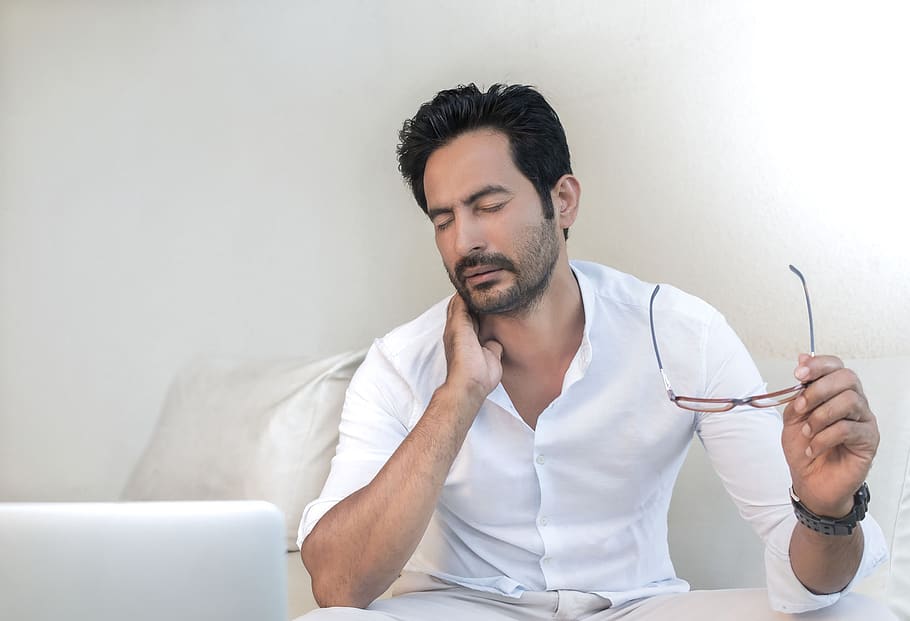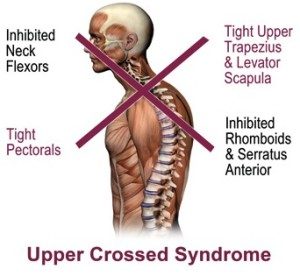
In today’s world, Upper Crossed Syndrome we spend most of our day with our arms out in front of us, and our heads craned forward. We assume this posture when we drive, play video games, work on the computer, read books, and when we enjoy many other activities. When we stay in this position for a long period of time, we develop imbalances in the muscles that control our neck and shoulders. This collection of muscle imbalances is known as “Upper Crossing Syndrome.” When these muscles get overworked, it can lead to neck pain, headaches, upper back and shoulder pain. The good news is that this problem can be easily fixed with chiropractic treatment and some simple exercises. Keep reading to learn more about upper crossed syndrome.

The Problem:
The Czechoslovakian physician, Dr. Vladimir Janda described this pattern of muscle imbalance, which involves muscles that can divided into two groups, “facilitated” or over-activated tight muscles, and “inhibited” or under-activated weak muscles. The muscles in the front of the neck (deep neck flexors) and the muscles in the upper back (lower and mid trapezius and rhomboids), which we refer to as “shoulder blade stabilizers”, become inhibited or turned off. The muscles in the back of the neck (neck extensors), the pecs (chest muscles), and the SCM muscles (on either side of the neck), become too tight (facilitated), pulling the neck forward and rolling the shoulders inward. This can cause neck pain, shoulder pain, upper back pain and headaches.
Upper Crossed Posture:
- Forward head carriage
- Increased curve of the upper back (“hunchback”) and neck
- Elevated and protracted shoulders
- Winging or rotation of the shoulder blades
One simple way to check whether you are experiencing this problem is to look in a full-length mirror. When you stand facing the mirror, with your arms down and relaxed, check which direction your palms are facing. If they’re facing towards each other, great! This indicates that your shoulders are not being rolled forward. If they’re facing backward, it indicates that your shoulders are rolling inward. Looking sideways, it’s a bit harder to tell whether your neck is protruding, but in general, you want your ear canals to be approximately over your mid shoulders when looking at you from the side.
What should I do?
If you’re reading this and saying to yourself, “Wow. This is talking about me!” Don’t worry. You’re not broken. This is a really common problem, and it can be remedied fairly easily if you’re willing to do some stretching and exercises that take about 5 minutes. Give us a call at (201) 569-1444 and schedule an appointment today.
Welcome to North Jersey Whole Health Center, LLC we offer services such as Chiropractic Manipulative Therapy, Gait Scan Technology, Nutritional Medicine, Orthotics and Supports, Phonophoresis, Physical Examinations, Physiotherapy.
Read more of our blogs.
